Solar eclipse of April 29, 2014
| Solar eclipse of April 29, 2014 | |
|---|---|
 Map | |
| Type of eclipse | |
| Nature | Annular |
| Gamma | -1.00001 |
| Magnitude | 0.9868 |
| Maximum eclipse | |
| Duration | - |
| Coordinates | 70°36′S 131°18′E / 70.6°S 131.3°E |
| Max. width of band | - km |
| Times (UTC) | |
| (P1) Partial begin | 3:52:38 |
| (U1) Total begin | 5:47:50 |
| Greatest eclipse | 6:04:33 |
| (U4) Total end | 6:09:20 |
| (P4) Partial end | 8:14:28 |
| References | |
| Saros | 148 (21 of 75) |
| Catalog # (SE5000) | 9539 |
An annular solar eclipse occurred on April 29, 2014. A solar eclipse occurs when the Moon passes between Earth and the Sun, thereby totally or partly obscuring the image of the Sun for a viewer on Earth. An annular solar eclipse occurs when the Moon's apparent diameter is smaller than the Sun's, blocking most of the Sun's light and causing the Sun to look like an annulus (ring). An annular eclipse appears as a partial eclipse over a region of the Earth thousands of kilometres wide. The center of the moon's shadow misses the south Pole of the Earth, but the partial eclipse was visible from parts of Antarctica and Australia.
Images
- Animation of path
 Simulated greatest eclipse from Victoria Land
Simulated greatest eclipse from Victoria Land
Related eclipses
Solar eclipses 2011-2014
Each member in a semester series of solar eclipses repeats approximately every 177 days and 4 hours (a semester) at alternating nodes of the Moon's orbit. Note: Partial solar eclipses on January 4, 2011, and July 1, 2011, occur in the previous semester series.
| Solar eclipse series sets from 2011–14 | ||||
|---|---|---|---|---|
| Descending node | Ascending node | |||
| Saros | Map | Saros | Map | |
| 118 | June 1, 2011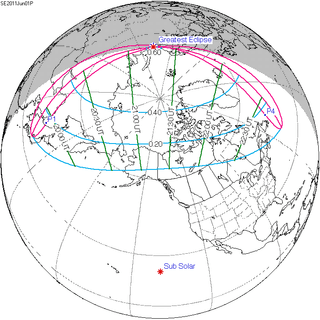 Partial |
123 | November 25, 2011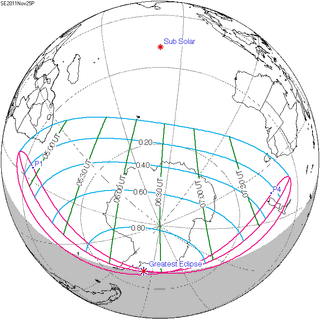 Partial | |
128 Middlegate, Nevada |
May 20, 2012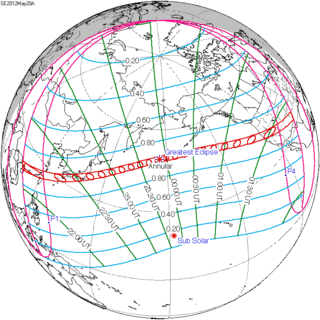 Annular |
133 Ellis Beach, Queensland |
November 13, 2012 Total | |
| 138 Churchills Head, Australia |
May 10, 2013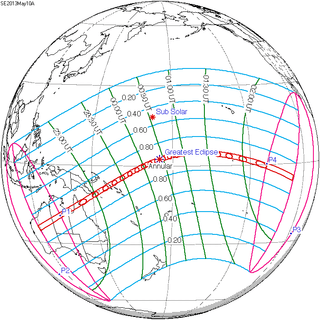 Annular |
143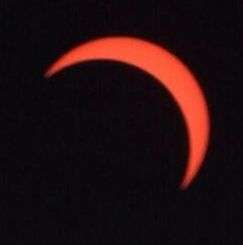 Partial from Accra, Ghana |
November 3, 2013 Hybrid | |
| 148 | April 29, 2014 Annular |
153 Partial from Minneapolis |
October 23, 2014 Partial | |
Metonic series
The metonic series repeats eclipses every 19 years (6939.69 days), lasting about 5 cycles. Eclipses occur in nearly the same calendar date. In addition the octon subseries repeats 1/5 of that or every 3.8 years (1387.94 days).
| 21 eclipse events, progressing from north to south between July 11, 1953 and July 11, 2029 | ||||
|---|---|---|---|---|
| July 10-11 | April 29-30 | February 15-16 | December 4 | September 21-23 |
| 116 | 118 | 120 | 122 | 124 |
 July 11, 1953 |
 April 30, 1957 |
 February 15, 1961 |
 December 4, 1964 |
 September 22, 1968 |
| 126 | 128 | 130 | 132 | 134 |
 July 10, 1972 |
 April 29, 1976 |
 February 16, 1980 |
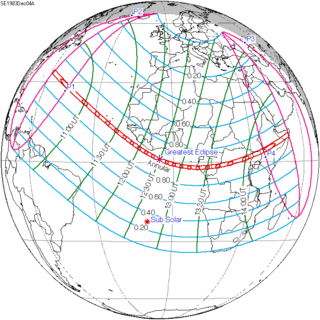 December 4, 1983 |
 September 23, 1987 |
| 136 | 138 | 140 | 142 | 144 |
 July 11, 1991 |
 April 29, 1995 |
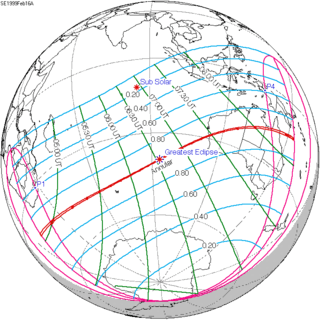 February 16, 1999 |
 December 4, 2002 |
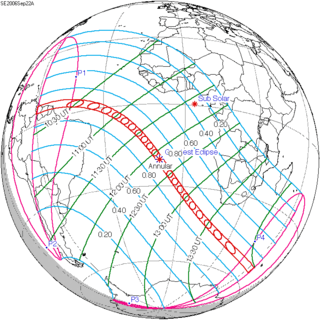 September 22, 2006 |
| 146 | 148 | 150 | 152 | 154 |
 July 11, 2010 |
 April 29, 2014 |
 February 15, 2018 |
 December 4, 2021 |
 September 21, 2025 |
| 156 | ||||
 July 11, 2029 | ||||
Notes
References
- Earth visibility chart and eclipse statistics Eclipse Predictions by Fred Espenak, NASA/GSFC
- A Partially Eclipsed Setting Sun, APOD 4/30/2014, partial eclipse of Adelaide, South Australia
- Brisbane Sunset Moonset, APOD 5/1/2014, partial eclipse of Brisbane, Queensland
| Wikimedia Commons has media related to Solar eclipse of 2014 April 29. |